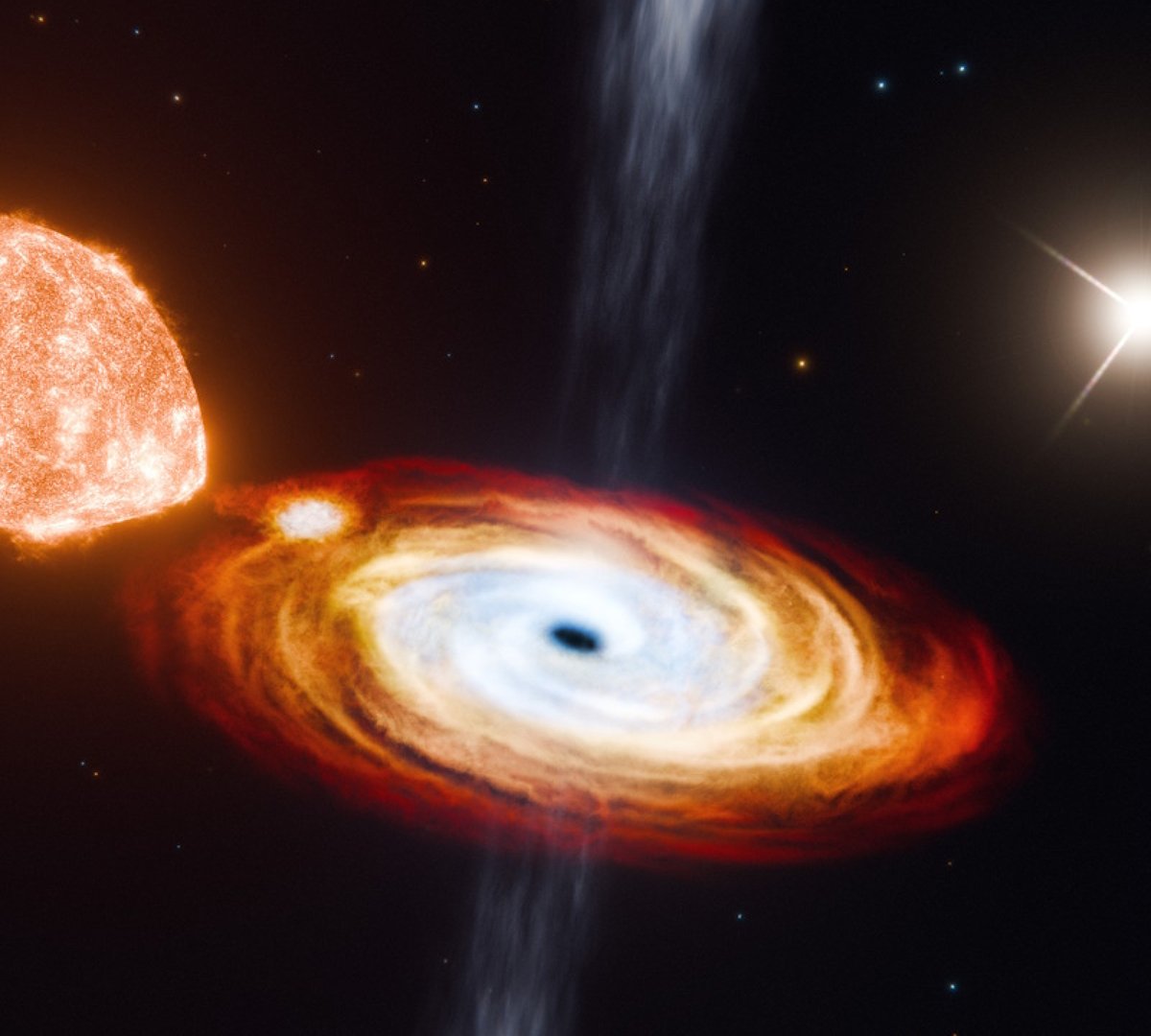Every week TecMundo and #AstroMiniBR bring the latest cosmic news, so you can always stay up to date with the main news and curiosities about our fantastic and vast universe. Check this out!
1. A black hole and its two companion stars!
Most black holes detected so far in the universe appear to be part of a binary: a binary system consisting of the black hole in question and a secondary object (a star, a much denser neutron star, or another black hole). They spiral around each other, being mutually attracted by gravity. But a new discovery has expanded this vision!
In a new study published this month in the scientific journal Nature, astrophysicists from MIT and Caltech found Observation of the first “triple” of black holes! The system, called V404 Cygni, is located 7,800 light-years from Earth and contains a central black hole consuming a small star spiraling near the black hole.
But surprisingly, a second star also appears to be orbiting the black hole, albeit at a much greater distance. Physicists estimate that this distant companion orbits the black hole every 70,000 years.
This discovery will make it possible Astronomers better understand how black holes associated with star systems form and evolve over cosmic time.
2. How long does it take for a photon to leave the Sun?
When A photon is produced in the core of the SunIt arises from nuclear fusion reactions in which four hydrogen nuclei combine to form a helium nucleus and release energy in the form of radiation. The density of matter in the nucleus is extremely high, causing the photon to collide frequently with charged particles such as protons and electrons.
This path is complex and “zigzag” because with each collision the photon changes direction, is absorbed and re-emitted several times, causing it to travel a distance much greater than the radius of the Sun.
On average, a photon takes 10,000 to 170,000 years to pass through the different inner layers of the Sun (from the core to the radiation zone and then to the convection zone) before reaching the photosphere, the visible layer of the Sun’s surface. The gas in this last layer is less dense, allowing the photon to eventually escape into space and travel for about eight minutes until it reaches Earth.
This process illustrates the long and complex path that sunlight follows before it is perceived as the glow we see every day.
3. One of the largest molecules ever discovered in space!
An international team of astronomers has reported the discovery of one of the largest carbon-based molecules found in space, located in the Taurus molecular cloud, approximately 430 light-years from Earth.
Molecule, It consists of four fused planar carbon rings called pyrene and is classified as a polycyclic aromatic hydrocarbon (PAH). — one of the most abundant complex molecules in the visible universe.

PAHs were first detected in the 1960s in meteorites known as carbonaceous chondrites, which are remnants of the primordial nebula that formed our solar system.
This discovery is extremely important because it provides further clues that could help solve a long-standing mystery in astrochemistry: Where does carbon, the fundamental building block of life as we know it, come from?
Did you like the content? So, always stay updated with more astronomy curiosities at TecMundo! See you next week!
Source: Tec Mundo
I’m Blaine Morgan, an experienced journalist and writer with over 8 years of experience in the tech industry. My expertise lies in writing about technology news and trends, covering everything from cutting-edge gadgets to emerging software developments. I’ve written for several leading publications including Gadget Onus where I am an author.













